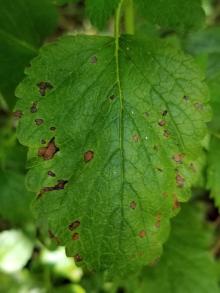Cause Leaf spots are common on lemon balm grown in PNW gardens but little work has been done on these problems. None have been formally reported in the PNW but the OSU Plant Clinic has found Phyllosticta and TSWV on the few samples that have been sent in. The fungi Phyllosticta decidua (now named Boeremia exigua var.







